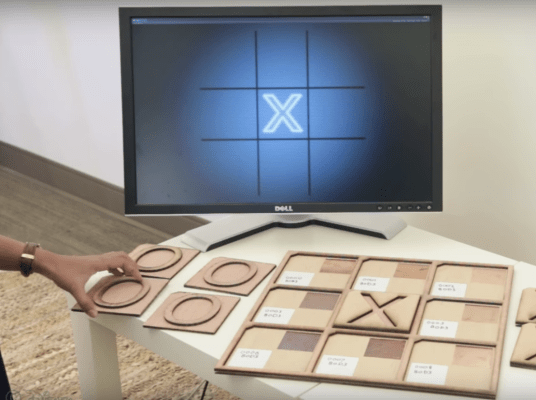The team at Disney Research is up to its fun old tricks, this time finding some new uses for off-the-shelf RFID tags. Along with researchers from Carnegie Mellon, Disney’s laboratory wing has discovered a low-latency way to process RFID signals, making it possible to use the tags to turn cheap objects into simple wireless interactive controls that don’t require battery power.
The RapID (pronounced “rapid”) system could lead to all manner of inexpensively produced interactive toys. Such functionality could also be incorporated into smart books with relatively little expense.
The system unlocks some interesting potential uses for the passive RFID system, which relies on the power of an external reader. Such functionality results in high latency and inaccurate tracking. The RapID framework reduces the lag time from two seconds to a far more workable 200 milliseconds.
According to Disney, “Our approach couples a probabilistic filtering layer with a monte-carlo-sampling-based interaction layer, preserving uncertainty in tag reads until they can be resolved in the context of interactions. This allows designers’ code to reason about inputs at a high level.”
The system might not have the same effectiveness with more complex gaming scenarios, but certainly seems to do the trick with the tic-tac-toe and Pong games demoed in the video.
